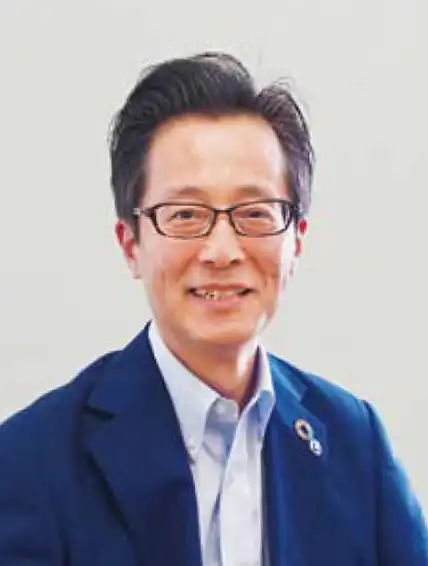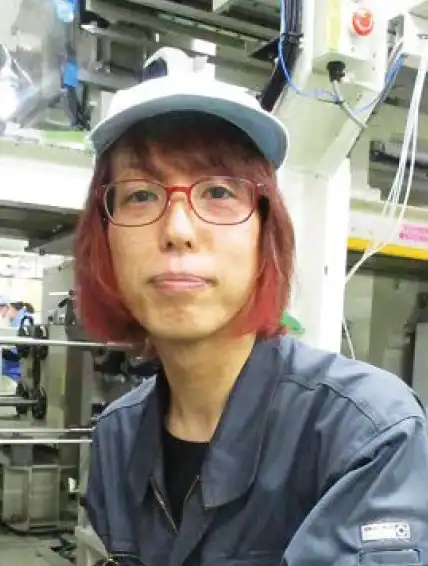Diversity & Inclusion (D&I)
The Gunze Group regards diversity and inclusion as one of its most important human resources strategies. We aim to enable all employees, regardless of their attributes and values, to fully demonstrate their abilities while feeling motivated in their duties. Further promoting women’s active participation is essential for realizing this aim, and we have defined the ideal state of women’s active participation as: all employees, regardless of gender or lifestage, are able to fully demonstrate their abilities while enjoying a good work-life balance and feeling fulfilled in their work. In order to achieve a state in which a certain percentage of decision makers in each organization are women, we are actively working to enhance the number of women in career-track positions, which is a prerequisite for such a state. Specifically, we are promoting measures such as the continued implementation of a 50% female employment ratio (excluding those working rotating shifts), promotion of retention through career support that encourages autonomous growth, enhancement of training programs for promoting leadership positions, and expansion of childcare support systems. In terms of promoting women’s active participation along with workstyle diversity, we will also work to increase men’s paternity leave utilization rate.
In improving our internal environment, we place the utmost importance on a people-oriented approach, one of our management philosophies. To create an environment in which employees can work safely, healthily, and to the best of their abilities, we continue to improve operations through DX, thoroughly manage working hours, reduce long working hours, and develop and expand various systems (telecommuting, flexible work hours, etc.) to enable employees from diverse backgrounds to choose the work style that suits them best. The activities of the Work Style Reform Committee include various initiatives based on the four pillars: raising employee awareness, developing business infrastructure, reforming operations, and engaging in office reform. There location of the Tokyo branch office in February 2022 was an opportunity to realize office reform by promoting the shift to a free address system. We are laterally deploying this know-how in the Osaka area, taking the same approach at the Dojima Office, which opened in August 2022. In addition, we are promoting the improvement of the annual paid leave utilization rate with the aim of allocating the work time saved by improving operational efficiency to time that employees can spend freely. Inconsideration of human rights, we are actively working to create a corporate culture of no harassment, no inducement, and no neglect by continuing to conduct surveys to ascertain the actual situation and provide training based on the results as part of our efforts to prevent harassment in the workplace.

Apparel Company
Sales, Department Store
I am a mid-level employee in the Company (which has a low percentage of women) who took leadership training in fiscal 2022. The course gave me a clearer understanding of myself, and I am currently going to school to obtain a certification for my future career development. Understanding my own characteristics, I have a better idea of what I need to learn and what I have to do to become a sought-after leader. I have also become more mindful about looking for causes and more efficient ways to solve operational problems, enabling me to find clues to solutions more quickly and clearly than before. In past training sessions I have attended, the participants were mainly those who were hired at the same time and doing similar work as myself. This time, however, I think we received training from the same perspective and mindset owing to the participation of women from the generation who will be tasked with leading Gunze in the future. I am grateful that this training has expanded my network of women in the Company, and I have made connections with people who work under similar conditions (childcare, flexible work hours, nursing care) and people in other workplaces, as well as making friends who can empathize with each other on various issues. This training was an opportunity for me to update my own career and to try new challenges. Looking ahead, I hope to contribute to the Company in any way I can by utilizing the contents of this training program to help younger employees and colleagues change their working styles and develop their careers so that they will be motivated to keep working, whether they are men or women.

Human Resources
Development Office
Personnel & General Affairs Department
I took the life and career design training course (at age 50) at a time when I was wondering about my future in this so-called era of 100-year lifespans. During this training, participants looked back on their careers so far, reexamined their values, organized their roles in life, and learned the concept of clarifying their desired vision for the future. Through this, I designed an autonomous way of living and working, giving me the opportunity to prepare and take action to realize my personal goals in my own way and with a positive attitude. After the training, I got in touch with a senior certified career consultant to determine my future direction and to set milestones toward taking the next step. I want to help others grow by sharing my knowledge and skills with them, giving advice, and sharing opinions. With this in mind, I began studying to acquire qualifications, using senior employees who had helped me as role models. I also had a 1-on-1 meeting with my supervisor to discuss my future career aspirations and reskilling(relearning) situation. This preparation and actions coincidentally coincided with my transfer to the Human Development. Currently serving on the Education Team, I am working to support the independent career development of our employees through various training programs and career counseling. I intend to continue developing my own career by thinking independently about it and striving for self-improvement, while reexamining how I live and work from time to time.

Engineering Plastics Division
Konan Plant
I took paternity leave to reduce my wife’s daily burden as much as possible and to create an atmosphere where it would be easy to take paternity leave where I work at the Konan Plant. Since there was no precedent for this in my department, about six months prior to when I wanted to take the leave, I spoke to my colleagues about how to cope with my absence. I then took paternity leave fora little less than a month, starting three weeks after my wife’s expected delivery date. After taking paternity leave, I became more aware than ever of completing my work more efficiently and on time. In addition, we are putting more effort into training our members so that the workplace can function without problems even when key personnel are absent. Taking paternity leave gave me enough time to learn about childcare. My wife said it was reassuring to have me with her during this difficult time caring for our first child and helping her throughout my paternal leave made her feel comfortable with taking care of the baby there after. I am still able to reduce my wife’s workload and perform my duties with a greater awareness of the balance between work and childcare.